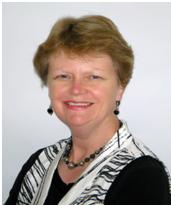
Dr Malcolm Clark, Principal Scientist (Deepwater Fisheries) at the National Institute of Water and Atmospheric Research (NIWA) Wellington, New Zealand, expressed this opinion during the international workshop on Environmental Management Needs for Exploration and Exploitation of Deep Seabed Minerals.
The workshop, jointly organised by SOPAC a division of the Secretariat of the Pacific Community and the International Seabed Authority, took place in Nadi, Fiji, during December 2011, as a part of the European Union funded, four-year Deep Seabed Minerals Project.
Dr Clark said that the more we learn about the deep sea the more we realise that parts of it are split up into smaller environmental packages, and we don’t have a good understanding of how large these package-like “ecosystems” are, or the degree of connectivity between them.
There are three types of deep seabed deposits that are being considered as potential resources to be mined: massive sulfide deposits cobalt crusts, and manganese nodules.
 News & Media Releases
News & Media Releases


 New laws will be required to address the challenges faced by regional countries in regulating the mining of deep seabed minerals according to Dr. Robin Warner of the Australia National Centre for Ocean Resources and Security (ANCORS).
New laws will be required to address the challenges faced by regional countries in regulating the mining of deep seabed minerals according to Dr. Robin Warner of the Australia National Centre for Ocean Resources and Security (ANCORS). “With a project as significant and exciting as this, we expect that there will be misunderstandings and misinformation, especially through those using the media. But we also know that it is important that any confusion related to this project must be addressed to ensure clarity and transparency in all aspects of the work.” So said Akuila Tawake, Deep Sea Minerals Project Team Leader of this European Union (EU) funded project.
“With a project as significant and exciting as this, we expect that there will be misunderstandings and misinformation, especially through those using the media. But we also know that it is important that any confusion related to this project must be addressed to ensure clarity and transparency in all aspects of the work.” So said Akuila Tawake, Deep Sea Minerals Project Team Leader of this European Union (EU) funded project. A World Bank mission comprising Iain Shuker (Mission Leader), Michael Bonte-Grapentin (Disaster Risk Specialist), Abigail Baca (Disaster Risk Engineer), David Winslow (Software Specialist, Consultant - Open Geo) Ivan Gomez (Risk Data Specialist Consultant AIR Worldwide) visited Suva, Fiji from December 4 to December 14, 2011 to work with SOPAC.
A World Bank mission comprising Iain Shuker (Mission Leader), Michael Bonte-Grapentin (Disaster Risk Specialist), Abigail Baca (Disaster Risk Engineer), David Winslow (Software Specialist, Consultant - Open Geo) Ivan Gomez (Risk Data Specialist Consultant AIR Worldwide) visited Suva, Fiji from December 4 to December 14, 2011 to work with SOPAC. 


